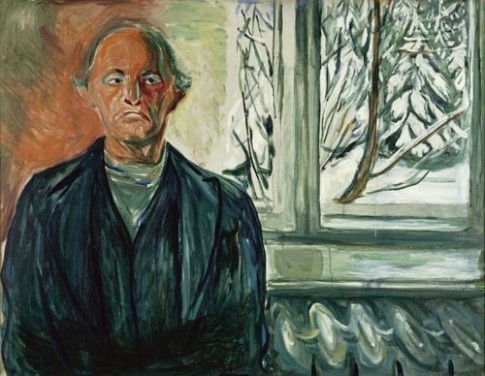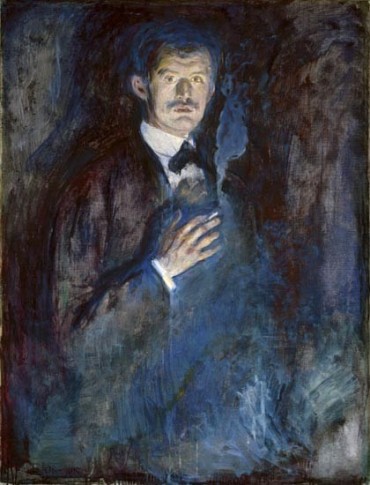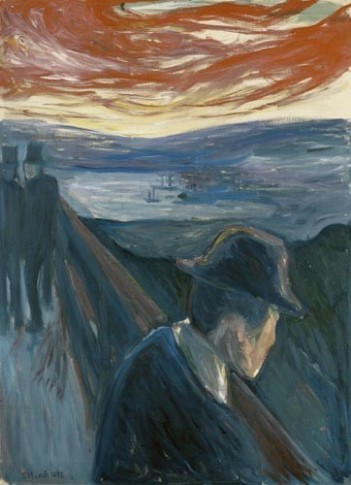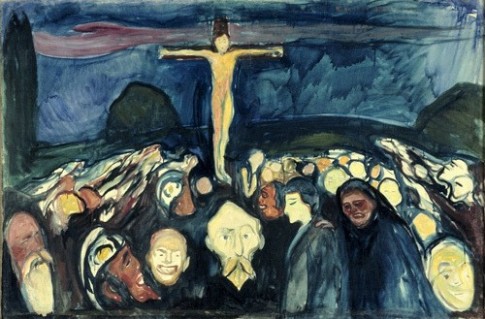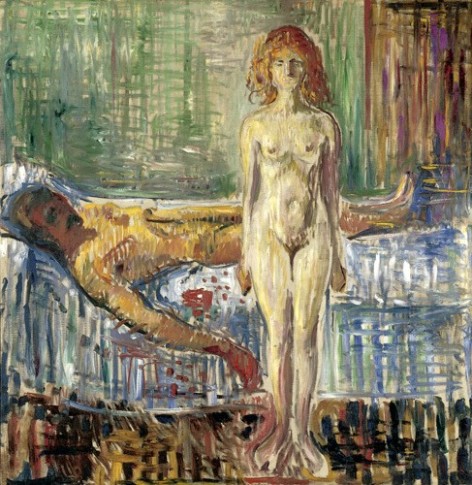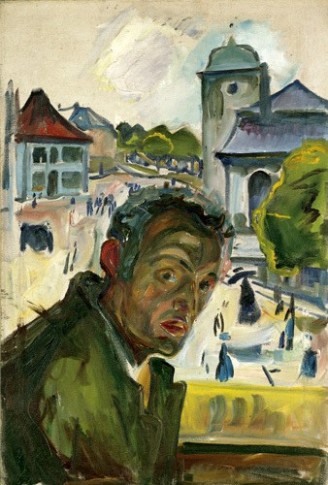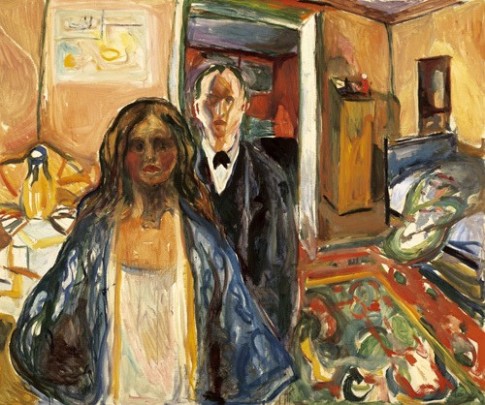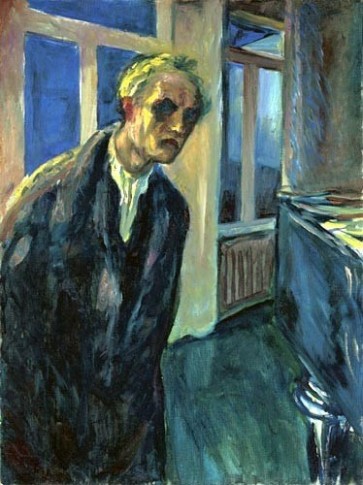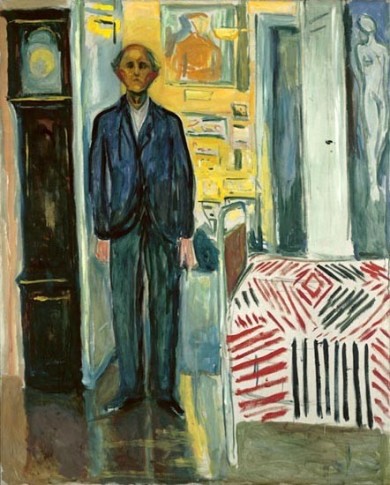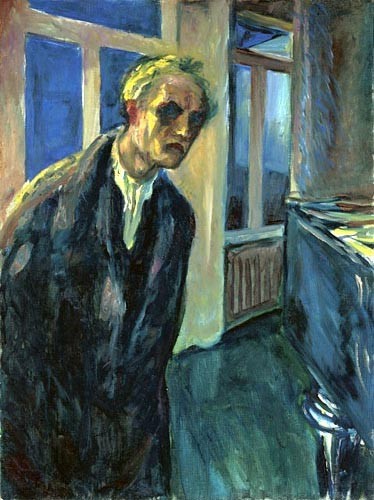
Edvard Munch, Self-portrait. The Night Wanderer, 1923-24 © Munch-museet/Munch-Ellingsen Gruppen/BUS 2005
The hermit at Ekely
– Edvard Munch, quoted by K.E.Schreiner in Edvard Munch som vi kjente ham. Vennene forteller, Oslo 1946.
Feelings of existential loneliness and restlessness invaded Munch’s life increasingly. In Self-portrait. The Night Wanderer (1923-24) he scrutinises his reflection, puzzled and frightened. Although the room is empty, it nevertheless appears cramped, like a prison isolating the artist from the rest of the world. In Starry Night (1923-24) Munch notices his own shadow. The city lights on the horizon and the stars in the sky expand the pictorial space and augment the feeling of solitude.
In the series The Bohemian’s Wedding he examines his relationship to the opposite sex once more in two self-portraits. In the lithograph The Bohemian’s Wedding (1929-30) Munch is deep in thought, as if the bohemian wedding going on behind him is merely a figment of his imagination. Munch has finally stepped into the role of onlooker.

